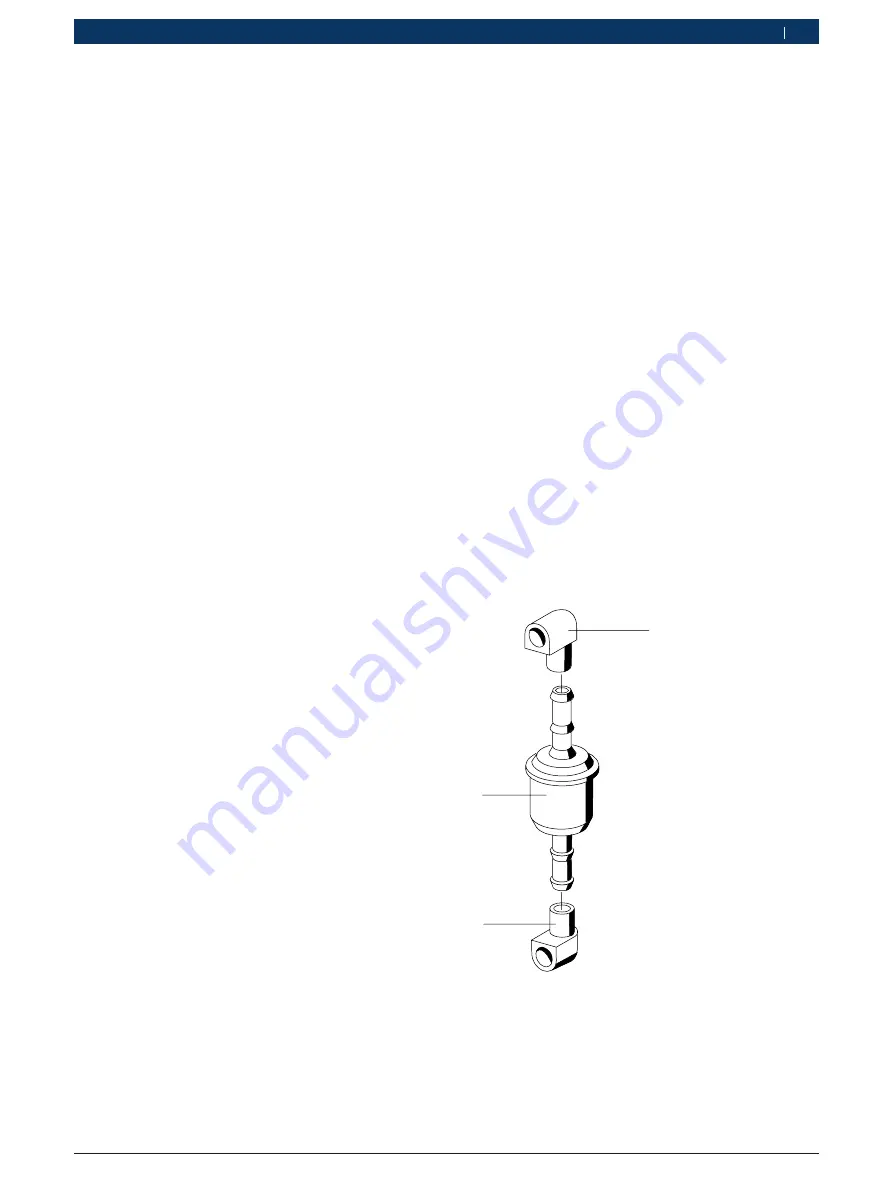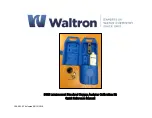
|
1 689 989 027
2009-03-26
|
Robert Bosch GmbH
Maintenance | BEA 460 | 29
BEA 460 | 29
| 29
en
5.3.2
Freedom from leaks of sampling system
To ensure accurate exhaust gas measurements it is
essential that there are no leaks in the sampling system.
It is advisable to perform a daily leak test.
5.3.3
Sampling probe
Keep the opening at the end of the probe clean. In
the event of HC residue and condensate, detach the
sampling probe from the hose and blow compressed air
through it in the direction opposite to intake direction.
5.3.4
Sampling hose
Check for damage. In the event of HC residue or
condensate, detach the hose from the analyzer and
blow compressed air through it in the direction
opposite to intake direction.
5.3.5
Filters
i
On replacing the filters GF1, GF2 and GF3 always
make use of genuine filters with the order no.
1 687 432 005.
If use is made of other filters (e.g. commercially
available fuel filters), the downstream measurement
chambers will be damaged by corrosion residue
(e.g. rust particles from metal filter elements) and
inadequate filter action.
!
Warranty and goodwill claims cannot be accepted
in the event of failure caused by the use of
incorrect filters.
Particles and aerosols are removed from the test gas
by way of a filter cascade. Particles are solids such
as dust and soot. Aerosols are minute droplets of
liquid. These may be deposited in the gas path and the
analysis chambers and form coatings. Attention is to be
paid to proper filtering and filter replacement to avoid
damaging the exhaust analyzer.
Filter GF1
This filter removes the coarsest particles from the gas
flow. It should therefore be replaced most frequently.
Depending on the rate of use of the exhaust analyzer,
the filter should be replaced roughly once a week. In the
event of severe contamination (Fault message: Poor flow),
the filter is always to be replaced (also applies to HC
residue).
Filter GF2
The second filter removes further particles and
aerosols from the gas flow. The greater the degree
of contamination of this filter, the smaller the pore
size and the better the filter action. The water in the
exhaust gas soon causes the filter to become wet. This
moisture washes the aerosols out of the gas flow and
makes for even better particulate filtration.
i
A wet filter is thus desirable!
Depending on the rate of use of the exhaust analyzer,
the filter should be replaced roughly once a month to
once a year.
In the event of severe contamination (poor flow) and
HC residue, the filter is always to be replaced.
Pump protection filter GF3
The filter GF3 is designed to protect the pumps.
i
Incorrect or too frequent replacement of the pump
protection filters will lead to contamination of the
analysis chambers in the exhaust analyzer.
Given correct usage, this filter has to be replaced once
a year at the most. The filter action of a wet GF3 is
again far superior to that of a dry filter.
1
2
2
459567/1K
Fig. 6:
Pump protection filter
















































